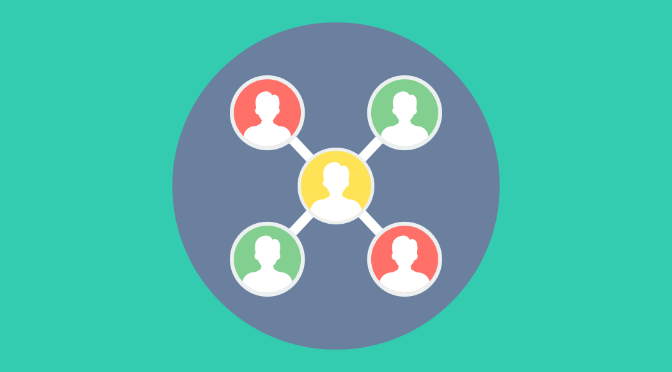Customer centricity may sound like a buzzword (or phrase, if you will), but it has a number of significant real-world use cases and the ability to generate substantial positive impact for a variety of organizations.
Popularized by Peter Fader, a professor at Wharton and co-founder of Zodiac, customer centricity focuses on the idea that not all customers are created equal. In every business, there are ‘most profitable’ and ‘least profitable’ customers. Properly segmenting them allows us to focus on the customers that generate the highest lifetime value for the organization and reduce the resources spent on acquiring/maintaining low profitability customers.
According to Fader, “We want to identify the best customers, learn what distinguishes them from the ‘so-so’ customers, and create meaningful, multifaceted relationships with them. That process, if executed properly, can generate greater ongoing profits than the usual obsession with product extensions and other tactics aimed at the ‘average’ customer.”
We’re going to present some use cases below, focusing on how customer centricity relates to a variety of businesses. At the end, we’ll recap what it all means and how you can also create a customer-centric marketing strategy.

eCommerce
We’ll take a company that sells baby items, B3 (Babies, Bottles and Bibs). They run various advertising and marketing campaigns with the end goal being a conversion, typically someone completing a multi-item order on their website. They love conversions, conversions are great and they should consider each conversion a successful result of any campaigns…right?
Well, yes and no. While they want their marketing to result in conversions, they should really be interested in gaining repeat customers. The question to ask, then, is not ‘Did the marketing campaign drive ten conversions?’ but rather ‘Of the ten conversions the marketing campaign drove, how many of those customers will complete future orders with B3?’
With the question properly framed, we now need to pull all of their data together to have a cohesive view of how their marketing is driving customer behavior. For most organizations, B3 included, the website and marketing campaign data lives in an analytics platform while their customer purchasing data lives on transactional servers. To understand how these two different data sets interact, we must bring the customer data from their transactional server into their analytics platform.
Combining the two creates a powerful toolset that allows us to view one-time transactions, repeat transactions and (with some extra leg work) lifetime value. All of these customer statistics are now connected to the marketing activities that drive them and B3 can make informed decisions about campaigns that target those most likely to become repeat customers.

Retail Stores or Call Centers
Now, what if their conversion is not online, but in a retail store? Perhaps B3 has a website, but it does not take orders and instead serves to direct customers to their brick-and-mortar retail location or to their sales staff, who will take their order over the phone.
In this case, we want to understand how their online marketing campaigns affect the offline purchasing of customers. An integration between the CRM and analytics platform will accomplish exactly that, allowing B3 marketers to determine which campaign led to a product view which led to a phone call that then turned into a retail store purchase.
In the absence of data integration, this information may be disjointed at best and viewed as completely unrelated at worst.
{The flip side of this could also be that B3 has a sales staff, but their process is to encourage customers to check themselves out on the website after answering any questions or providing guidance. In this scenario, we’d want to know how the offline interactions affect online purchasing, but the implementation and use case is ultimately the same as outlined above.}

Services
In an unexpected turn, B3 has decided that they would like to shift to the services industry. Rather than selling products, they connect parents with childcare information and potential childcare providers. The website drives only offline interactions, ultimately resulting in a business connection.
To get a full view of their customer’s purchasing journey and behaviors, B3 integrates Salesforce (their CRM) with Google Analytics (also known as GA, their analytics platform of choice), pushing their offline data into GA for analysis. With this integration, we can now see: Who filled out contact us forms, their geographical location, what services they might be interested in, how many and what type of offline transactions (phone calls, emails, childcare engagements) take place and more – all as it connects to online marketing initiatives. With this data, B3 can create very targeted campaigns aimed at audiences that match the behavior of their most valuable customers.

Cost of Acquisition
This is not a use case in and of itself, but rather something we want to understand in any scenario: The cost of acquisition for both one-time and repeat customers. However, we do not want an average cost of acquisition, we want them separated for individual analysis. Given that repeat customers will generate more revenue over the course of their customer lifetime, it seems reasonable that B3 would be willing to spend more to acquire them than they would one-time customers.
With the integration of various data platforms and building of attribution models, InfoTrust helps businesses solve an age-old conundrum for marketers: What marketing channels do we use and how much money do we need to spend to generate a new customer with the capacity to generate high value for our organization?
Customer centricity has many use cases, but it really boils down to this: It is a concept that can guide how we market to and acquire the prospects and clients that have the ability to become most valuable to our organization.
To learn more about how you can build customer centricity into your business, register for the upcoming webinar with Peter Fader of Zodiac.

